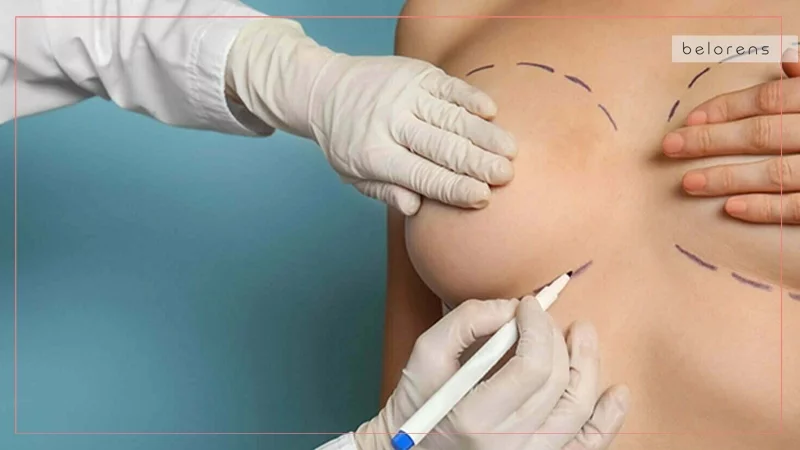
Published on 11 Aug 2024
Do Breast Implants Affect My Exercise Routine?
Fact checked
- Physical activity and exercise during the recovery period
- Will breast implants make it harder to exercise after complete healing?
- Chest workouts with breast implants
- Running with breast implants
- Swimming with breast implants
- What implant size and shape should I choose for more convenience during physical activities?
Breast implants have become increasingly popular among women seeking to enhance their appearance or reconstruct their breasts after surgery. While the benefits of breast augmentation are well-known, many women wonder how these implants might interfere with their daily lives, particularly their physical activities and exercise routines.
Staying active is crucial for overall health and well-being, and understanding the potential impacts of breast implants on physical activity is essential for those considering or already having implants. This concern extends beyond the initial recovery period and can influence one's fitness routine for the rest of their life. Immediately following surgery, the primary focus is on healing, with strict guidelines to avoid strenuous activities that could impede recovery. However, even after the body has healed, individuals with breast implants may need to consider long-term adjustments to their exercise regimen.
High-impact activities, certain strength training exercises, and intense chest workouts might require modifications to prevent discomfort or potential complications with the implants. Ongoing awareness and care are essential to ensure that maintaining an active lifestyle does not negatively impact the implants or overall health. This means continually listening to your body and possibly seeking advice from medical and fitness professionals to navigate these lifelong considerations.
Physical activity and exercise during the recovery period
After breast implant surgery, your body needs time to heal and adjust, especially when it comes to incorporating exercise back into your routine. The recovery period typically involves several stages, each requiring different levels of care and caution.
Initially, it's important to prioritize rest and avoid any strenuous activities to minimize the risk of complications and ensure proper healing. Gentle movements and light activities, such as walking, can usually be reintroduced gradually after the first week or two. It's essential to pay close attention to how your body responds during this period, avoiding any exercise that causes discomfort or pain.
As you progress through your recovery, you can begin to incorporate more moderate forms of exercise. Around the six-week mark, many find they can start resuming activities with a bit more intensity, but still with caution. High-impact exercises and those targeting specific muscle groups involved in the surgery should be approached slowly and carefully.
By the time you reach eight weeks post-surgery, many people can return to their regular exercise routines, making necessary adjustments to accommodate their healing process. Consulting with your healthcare provider before diving back into full-scale physical activity is always a wise step to ensure that your recovery is on the right track and to receive personalized recommendations tailored to your specific needs.
Will breast implants make it harder to exercise after complete healing?

After complete healing, breast implants can still influence how you approach your exercise routine. While many women return to their regular fitness activities without significant issues, some may experience discomfort or limitations depending on the type and placement of the implants. For example, implants placed under the chest muscles might affect certain strength training exercises, particularly those targeting the pectoral muscles, which can cause a stretching or pulling sensation.
High-impact sports, such as running or activities that involve a lot of jumping, may require additional support to minimize discomfort. Specialized sports bras designed for high-impact activities can help mitigate these issues by providing the necessary support and reducing movement.
Additionally, some women might find that certain positions or movements in activities like yoga or Pilates need to be adjusted for comfort. It's essential to listen to your body and make modifications as needed to avoid any strain or discomfort. Consulting with fitness professionals who understand your medical history and the specifics of your implants can provide valuable guidance on tailoring your exercise routine to fit your new body dynamics.
Overall, while breast implants do not necessarily prevent you from maintaining an active lifestyle, they do require a thoughtful approach to ensure long-term comfort and safety during exercise.
Chest workouts with breast implants
Breast implants can impact how you approach chest exercises (such as weight lifting, bench presses, push-ups, pull-ups, cable crossovers, and dumbbell flyes), though they do not necessarily prevent you from performing them. The extent to which implants interfere with these exercises depends largely on the type and placement of the implants.
If implants are placed under the chest muscle (submuscular), they may cause more noticeable interference during chest workouts. This is because the muscle itself is being worked on and can shift the implant, causing a stretching or pulling sensation. Subglandular implants, placed over the muscle, generally cause less interference, but some individuals might still experience discomfort during specific exercises.
It's important to start with lighter weights and pay close attention to your body’s response. For exercises like bench presses, push-ups, and chest flyes, modifications may be necessary. Using a neutral grip, performing exercises on an incline, or using machines that offer better control can help reduce strain on the chest area.
Additionally, high-impact activities or heavy weight lifting should be approached cautiously. Wearing a supportive sports bra is crucial to minimize movement and discomfort. Gradual progression in intensity and regular consultation with fitness and medical professionals can help ensure that chest exercises are safe and effective.
Also Read: 4 Types of Breast Implant Surgery Incisions: Which Technique is Right for Me?
Running with breast implants

Running is an excellent cardiovascular exercise, and many women with breast implants can continue to enjoy this activity by taking a few additional precautions to ensure comfort and safety. One of the most critical factors for running comfortably with breast implants is selecting the right sports bra. Look for bras that offer high support, specifically designed for high-impact activities like running, with wide straps and a supportive band to distribute weight evenly and provide stability. A well-fitted bra should snugly support your breasts without being too tight or restrictive.
After getting breast implants, it’s essential to allow your body sufficient time to heal before resuming running. Generally, the initial recovery period lasts around six to eight weeks, but it's crucial to follow your surgeon's advice on when to start exercising again. Begin with light, low-impact activities like walking or light jogging before gradually increasing intensity. Pay attention to any signs of discomfort or pain and adjust your activity level accordingly.
Maintaining proper running form can help reduce strain on your chest and improve overall comfort. Keep an upright posture with your shoulders relaxed and back, use shorter strides to reduce impact and minimize breast movement, and practice controlled breathing to maintain a steady pace and reduce stress on your body.
Even with precautions, some discomfort might occur initially as your body adjusts to running with implants. If you experience any soreness or swelling, apply ice packs and rest as needed. Over-the-counter pain relievers can help manage discomfort, but consult your doctor before taking any medication.
As you settle into your running routine, keep long-term considerations in mind to ensure ongoing comfort and safety. Schedule regular follow-up appointments with your surgeon to monitor the condition of your implants. High-impact sports bras can lose their support over time, so replace them regularly to maintain optimal support. Maintain overall fitness and hydration to support your running routine and general well-being.
Swimming with breast implants

You can go swimming with breast implants, but it’s important to consider the timing and follow specific guidelines both during the recovery period and afterward to ensure safety and comfort.
After breast implant surgery, your body needs adequate time to heal before you can resume swimming. The initial recovery period typically lasts about six to eight weeks, but it can vary depending on individual factors and the specifics of your surgery. During this time, it's crucial to follow your surgeon's instructions closely.
During the first few weeks post-surgery, avoid submerging your chest in water. This precaution helps prevent infection and ensures that your incisions heal properly. Activities such as soaking in bathtubs, hot tubs, and swimming pools should be avoided.
Once you have fully healed and received clearance from your surgeon, you can safely resume swimming. It’s important to choose swimwear that offers adequate support for your breasts. Swimsuits with built-in bras or tops designed for high-impact activities provide better support and minimize movement. Adjustable straps can help you achieve a secure fit.
Start with short swimming sessions to allow your body to adjust. Pay attention to how your body responds and avoid any strokes or movements that cause discomfort. While swimming, monitor for any signs of discomfort or unusual sensations around your implants. If you experience pain or swelling, stop swimming and consult your healthcare provider.
Different swim strokes exert varying levels of pressure on the chest. Freestyle and backstroke are generally less strenuous on the chest muscles compared to breaststroke or butterfly. Experiment with different strokes to find the ones that feel most comfortable for you.
What implant size and shape should I choose for more convenience during physical activities?

Choosing the right size and shape of breast implants is crucial for ensuring comfort and convenience during physical activities. When it comes to size, opting for a moderate size can strike a balance between achieving your desired aesthetic and maintaining comfort during exercise. Larger implants might add extra weight and cause more movement, leading to discomfort or strain during physical activities.
It's also important to consider your overall body proportions and lifestyle, as implants that are too large in relation to your body size can affect your balance and posture, making some exercises more challenging. If you are highly active or involved in sports that require significant physical exertion, such as running or high-impact aerobics, opting for a smaller, more manageable implant size can reduce potential discomfort and make it easier to find supportive sports bras.
Regarding the shape, round implants provide a fuller look and tend to be more versatile in terms of appearance. They can also be less prone to shifting, which is beneficial for maintaining a consistent shape during movement. On the other hand, teardrop (anatomical) implants mimic the natural slope of the breast and can offer a more natural appearance. However, they may require more precision in placement to avoid rotation, which can alter the breast shape. Teardrop implants can be a good option if you prefer a more natural look that still supports physical activities.
The placement of the implants also plays a role in comfort during exercise. Submuscular placement, where the implants are placed under the chest muscle, can provide additional support and reduce the visibility of the implant edges. This placement may result in less interference with physical activities as the muscle offers extra cushioning. Subglandular placement, where the implants are placed over the muscle, may allow for a shorter recovery time but can be more prone to movement during vigorous activities. If choosing this placement, ensuring you have a well-fitted, supportive sports bra is essential to minimize discomfort.
Consulting with your plastic surgeon is crucial. Discuss your lifestyle, activity level, and aesthetic goals with them to get personalized recommendations based on your body type and preferences. Many surgeons offer sizers that you can wear in a bra to visualize and feel different implant sizes and shapes, helping you get a better sense of what will work best for you. Regardless of the size and shape you choose, investing in high-quality, supportive sports bras designed for high-impact activities is essential to offer good support and minimize movement.
Explore our breast augmentation discussion page to connect with a supportive community, share your story, and discover valuable insights from others' experiences!




